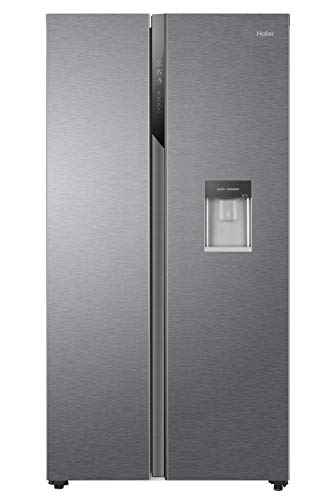Where to Buy a Fridge: A Comprehensive Guide
Purchasing a refrigerator is a significant decision due to its role as one of the most necessary appliances in the home. American Fridge Sale are available in different sizes, styles, and price ranges, making the purchasing process potentially frustrating. However, comprehending where and how to buy a fridge can streamline this procedure. This article aims to check out various avenues for buying a refrigerator, key considerations, and regularly asked concerns to help consumers make notified options.
Where to Buy a Fridge
When it comes to looking for a refrigerator, consumers have numerous options. Each opportunity offers its own pros and cons, and understanding these can help purchasers select the best suitable for their requirements.
1. Brick-and-Mortar Retailers
Conventional home appliance shops and big-box merchants continue to be popular destinations for refrigerator shopping. These places include:
- Home enhancement stores (e.g., Home Depot, Lowe's)
- Electronics shops (e.g., Best Buy)
- Specialty device sellers
Pros:
- Hands-On Experience: Customers can see, touch, and check the fridge.
- Immediate Availability: Many shops use same-day shipment services.
- Sales Assistance: Trained sales personnel can supply professional guidance.
Cons:
- Higher Prices: Retail prices can be steeper compared to online choices.
- Restricted Inventory: Smaller stores may not carry extensive selections.
2. Online Retailers
The internet has revolutionized the method people shop, consisting of for devices. Popular online choices include:
- E-commerce giants (e.g., Amazon, Walmart)
- Manufacturer sites (e.g., Samsung, LG)
Pros:
- Wider Selection: Online stores often have a more substantial inventory compared to brick-and-mortar areas.
- Convenience: Shopping can be done from the comfort of home at any time.
- Rate Comparisons: Easily compare rates across different platforms.
Cons:
- Shipping Costs: Delivery charges can contribute to the overall rate.
- No Immediate Gratification: Customers have to await shipment.
- Absence of Personal Interaction: No chance to ask direct concerns.
3. Storage facility Clubs
Membership-based wholesale sellers, like Costco and Sam's Club, provide fridges at competitive prices.
Pros:
- Bulk Discounts: Membership frequently permits cost savings on larger purchases.
- Top quality: These stores preserve high standards for the brand names they carry.
Cons:
- Membership Fee: A subscription is required to shop there.
- Limited Choices: The inventory may not include all brand names or models.
4. Regional Classifieds and Marketplaces
Platforms like Craigslist, Facebook Marketplace, and OfferUp allow people to buy used or brand-new fridges from regional sellers.
Pros:
- Lower Prices: Often cheaper than retail, especially for utilized items.
- Regional Transactions: Easy to view and get home appliances.
Cons:
- Risk of Quality Issues: Used designs can feature covert issues.
- No Return Policy: Typically, sales are last, with no warranty or assurance.
Table of Fridge Types and Features
| Fridge Type | Best For | Secret Features |
|---|---|---|
| Top Freezer | Budget-conscious consumers | Timeless design, economical |
| Bottom Freezer | Easy access to fresh food | Ergonomic style |
| Side-by-Side | Households with restricted space | Sufficient storage and availability |
| French Door | Gourmet cooks | Style, area, advanced features |
| Compact | Little areas like homes | Space-saving style |
Key Considerations When Buying a Fridge
As consumers consider where to buy a fridge, different factors to consider can direct their decision-making procedure:
Size and Fitting
- Step the Space: Ensure the fridge fits within designated cooking area area.
- Door Swing: Account for door clearance and swing radius.
Energy Efficiency
- Look for Energy Star Ratings: This guarantees lower electrical energy costs.
- Comprehend the Long-Term Savings: Energy-efficient models might have higher upfront expenses however lower operating expense.
Design and style
- Select a Style: Select appropriate designs such as conventional or modern according to your cooking area looks.
- Complete Options: Stainless steel, black, and white surfaces can impact the overall appearance.
Rate Considerations
- Set a Budget: Determine a spending variety before shopping.
- Watch for Discounts: Seasonal sales periods typically supply cost savings.
Service warranty and Support
- Manufacturer's Warranty: Understand what is covered and for for how long.
- Consumer Service: Check scores for maker assistance services.
Frequently Asked Questions (FAQs)
Q: What is the most energy-efficient refrigerator brand name?
A: Brands such as Energy Star, LG, and Samsung are widely recognized for their energy performance.
Q: Is it worth buying an utilized refrigerator?
A: It can be, especially if you are on a tight spending plan. However, guarantee you check the appliance completely for any existing issues.
Q: What is the average life expectancy of a refrigerator?
A: Most fridges last in between 10 to 20 years, depending upon use and maintenance.
Q: Should I buy a refrigerator online or in-store?
A: This depends upon personal preference. Online shopping offers convenience and choice, while in-store offers hands-on experience and immediate buying alternatives.
Q: What includes should I search for in a refrigerator?
A: Key features to consider include adjustable shelving, ice and water dispensers, sound level, and wise technology alternatives.
Looking for a refrigerator doesn't have to be a complicated task. With various acquiring choices-- from brick-and-mortar shops to online merchants and classified advertisements-- consumers can find the best refrigerator that fits their needs. By thinking about vital elements such as size, energy efficiency, and design, prospective purchasers are better equipped to navigate the getting procedure. Eventually, whether buying brand-new or used, the objective remains the very same: to boost the kitchen experience with a trustworthy device that satisfies both useful requirements and personal choices.

